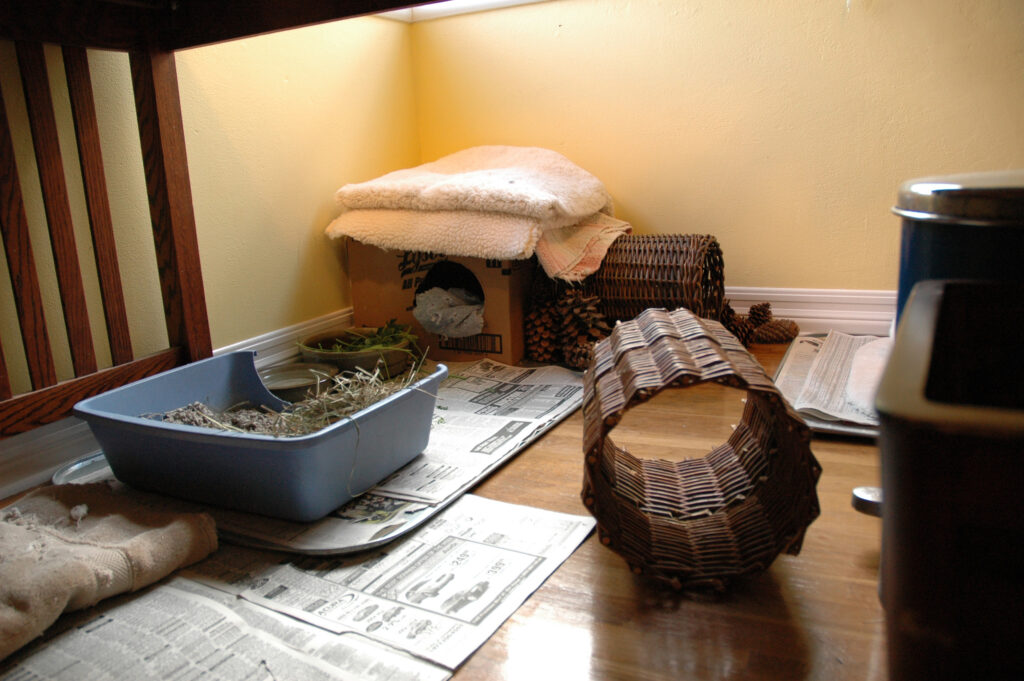RUNNING AREAS might be included in the living space if the space is large. The type of activity performed is influenced by the shape of the area—long, wide, high, low. Exercise areas can be expanded vertically by adding ramps or step-ups to multiple levels. This allows climbing and jumping, but horizontal running space is also needed. Most exercise needs can be met inside your house with either a large around-the-clock living space or access to additional rooms for playtime. Going into a different play area often stimulates more activity. If your bunny remains in the same area, you can rotate stimulating toys.
Opportunity to exercise should be provided at least four hours a day or thirty hours a week. Not all rabbits take advantage of their opportunities, though, and you may need to provide encouragement in the way of equipment.
Outdoor Pens
A covered outdoor playpen might serve for daytime exercise, as well as an enclosed porch or balcony that’s attached to your house. “Enclosed” means full fencing on all sides and overhead, even at upper-story levels. Predatory birds can and do snatch rabbits from balconies. Also, do not leave a rabbit unattended anyplace with public access, such as your front porch.
Portable pens. People who like some outdoor time for themselves can set up an x-pen (same kind as we use indoors) within a fenced yard. As you sit and read or do nearby yard work, you are there to fend off any hawks, cats, or any other predatory animals. The floorless pens can be rotated around the yard so that the bunnies have fresh grass to chew. Make sure the grass is pesticide free and not frequented by nocturnal wild animals (with possibly contaminated feces).
If you can’t stand guard every minute, then the pens will need tops. Walter Jensen constructed the ones shown on the left by snapping together pvc piping into a frame and stretching heavy netting over the frame. Cable ties secure the tops to the pens, using two tops for each pen.
Stationary runs in my own backyard now sit on a slab of bricks, which are hosed off occasionally. The eight-foot-long wood frames are heavy enough to stay in place. Step-through gates at the front and hinged wire mesh tops give us walk-in access. In wet weather, we lay clear corrugated plastic panels (patio roofing) across the tops of the runs.
At the beginning of the latest warm season, we “fly-proofed” the runs with fiberglass window screening (sold in rolls at the hardware store). It was very easy to staple screen skirts around all sides and tops. We were quite pleased with the results—no flies or mosquitoes.
Dogs can’t get into our fenced yard, and neighborhood cats can’t get into the runs, so the runs can be unattended for short periods during the day. They are unsafe for night use, however, since we have raccoons in our area.
Before your bunny goes outside, take extra care to know your area and prepare for potential predators in your neighborhood.
©Copyright Marinell Harriman. All Rights Reserved. Republished with the permission of the author.
Exercise: Setting up playgrounds was originally published in House Rabbit Handbook (5th ed.)

